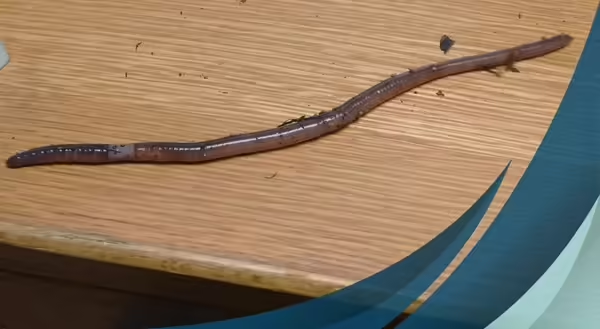
While they may sound like something out of a fever dream, jumping worms are not only real, but a nightmare for gardeners. These highly invasive creatures are a scourge on our forests and gardens and are easily spread when sharing plants from infected yards.
What do they look like?
Native to East Asia, jumping worms (Amynthas spp.) were sold in the U.S. for fishing or composting. Jumping worms are also known as Alabama jumpers, crazy worms, or snake worms because of their size and the way they thrash around when disturbed. Adult worms are 4-8” long and are smooth, gloss, grey/brown color. One of the most notable features to distinguish jumping worms from regular earthworms is the milky white clitellum (the band that goes around the worm’s body near the head) that is not raised. When they move along the surface, instead of the typical stretch-shorten movement pattern, they move more in an S-like pattern, like a snake.
Why are they bad?
Ecologists worry about the effect jumping worms are going to have on natural areas because these voracious eaters chew up everything on the surface, like mulch, beneficial fungi, and even plant roots, stripping the nutrients killing plants and leaving behind dried up soil that resembles coffee grounds. In home landscaping, similar effects will be seen. Soil will be drier and plants will struggle. Currently, there is no known way to control jumping worms. Prevention is the key.
Where are they found?
As of 2022, jumping worms have been confirmed in 47 Illinois counties and suspected in three others. This includes most of northeastern Illinois. To test an area for jumping worms, mix ¼ cup of ground yellow mustard with a gallon of water and pour it on the soil. The mustard will irritate the worms and they will come to the surface. Look for the band about 1/3 of the way from the head (clitellum) to be milky white and not raised, as well as the typical thrashing behavior and snake-like crawling.
Prevention
The best way to prevent transfer of jumping worms to your yard is to limit the movement of soil, mulch, compost, and other plant material. This means not exchanging plants between yards in areas where jumping worms are present. While we all love sharing our plants with our friends and neighbors, we risk bringing along hitchhikers. Jumping worm eggs are too small to see so to reduce the risk of spreading worms (and weed seeds!), wash the soil off the roots before planting in clean potting soil or your yard. Purchasing plants, mulch, garden soil, and other organic materials from professional nurseries is generally safe, but it’s still a good idea to ask if they are following practices to eliminate risk of transferring worms. Cleaning your tools thoroughly after working in other areas, such as community gardens, is also a good idea.
For updates on jumping worms, check out the University of Illinois Extension’s Jumping Worms Guide. Also, check out the University of Illinois Extension Horticulture YouTube Channel for videos on invasive pests and other horticulture topics. (Jumping worm video)